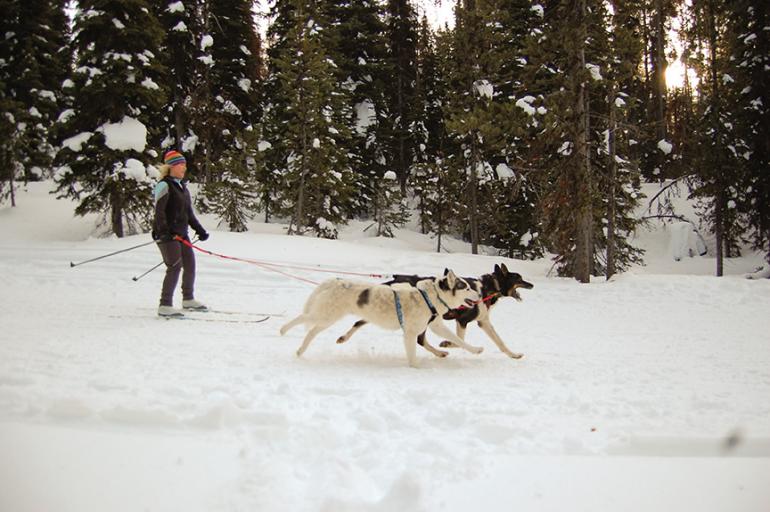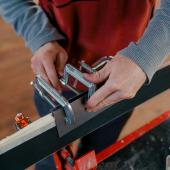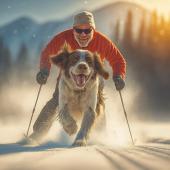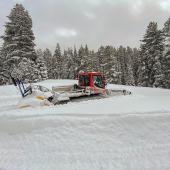From Bed Hog to Sled Dog
Skijoring with canines.
Picture yourself on a hike with your dogs, trying to keep up with them. Much to your chagrin, you can’t. Your dogs become one cohesive blur as they vanish around the next turn. Streamer-like tongues cascade from their mouths dragging a vapor trail of saliva to advertise where they’ve been. Excluded from their game, you saunter behind them feeling as unappealing as de-wormer. Suddenly, you transform into a dog. You are capable of transcending human speed. You perceive the environment differently as your senses heighten. You catch up with them, and join their stimulating game.
The fantasy is romantic, yet not that farfetched. Keeping pace and maintaining a spiritual connection with your high-energy dogs on trail is achievable. Canine skijoring allows you to do so. It is a hybrid sport that combines the principles of dog mushing and Nordic skiing. Skijoring with a dog requires minimal equipment, and is a thrilling way to find adventure with your feisty Fido.
“Skijor” is a Norwegian term that means, “to drive on skis.” Skijoring was hatched as a form of transportation in Scandinavian countries following the Alaskan gold rush. Miners returned to their native countries after witnessing dog sledding used as an efficient form of mobility on frozen terrain. They reinvented Alaskan mushing by using skis instead of dog sleds, and reindeer or caribou instead of dogs. Recently, skijoring has been resurrected as a recreational and competitive sport among spheres of both equestrian and canine enthusiasts.
The equipment required to skijor with your dog is a Nordic skiing platform, and a harnessing system that hitches you and your dog. The harnessing system consists of mushing-specific harnesses worn by your dog, a functional belt worn by you, and a shock absorbing cable that hitches your belt to your dog’s harnesses. This specialty equipment can be purchased from online mushing suppliers, or sewn at home with the guidance of other DIY mushers.
Skijoring is a physical sport that generates the potential for athletic injuries. To mitigate canine and human injuries on the trail, it’s important to follow a few guidelines:
- First and foremost, your dog should be fully-grown, weigh at least 30 pounds, and be in good shape. Consult your veterinarian to determine if your dog is healthy enough for rigorous physical exercise such as skijoring.
- Your dog’s harness must fit properly. Dogs’ body shapes and sizes vary, and harnesses can be custom made to accommodate their unique physiques.
- Reduce your own chances of injury by becoming a proficient Nordic skier before introducing the additional pulling power of your dog.
- Finally, wear appropriate clothing, and be prepared for environmental hazards that arise while adventuring outdoors.
If you don’t already have a dog, look no further than your community’s animal shelter to find the perfect four-legged trail companion. Pups who are motivated to run beside other dogs are ideal skijoring candidates. Dogs innately follow each other, and paths of least resistance. Therefore, you will find training to be exponentially easier if you practice on dog-friendly groomed trails, and with a mentor dog that already enjoys the task of pulling a human on skis.
Patience and positive energy are paramount in fostering a mutual relationship with your dog. Once this alliance is established, you can soar swiftly around turns with your canine colleagues. You will not be aware of the moment your transformation took place until the day you realize all of your summer savings are allocated to high-performance kibble instead of a season pass at the ski hill.











